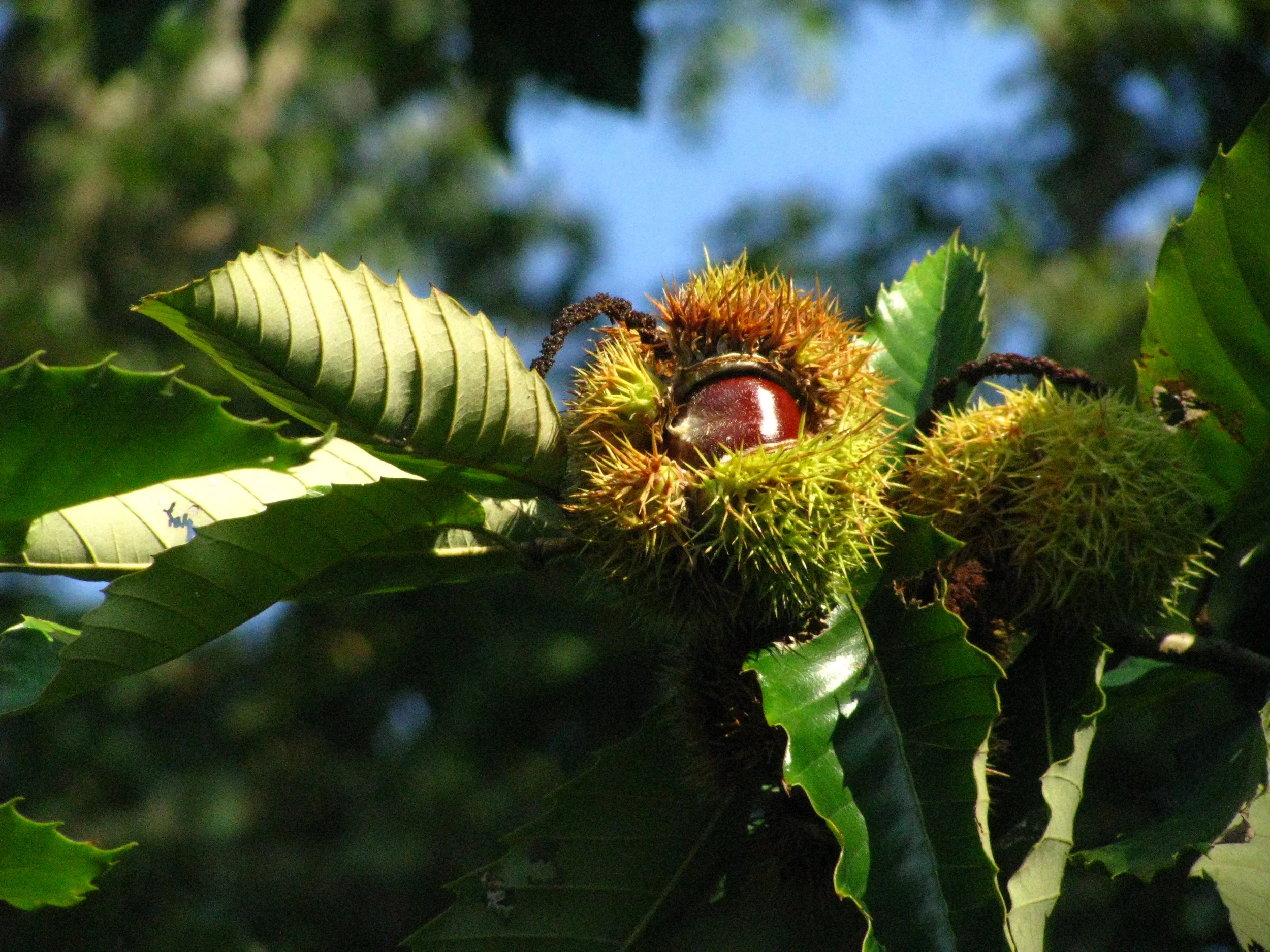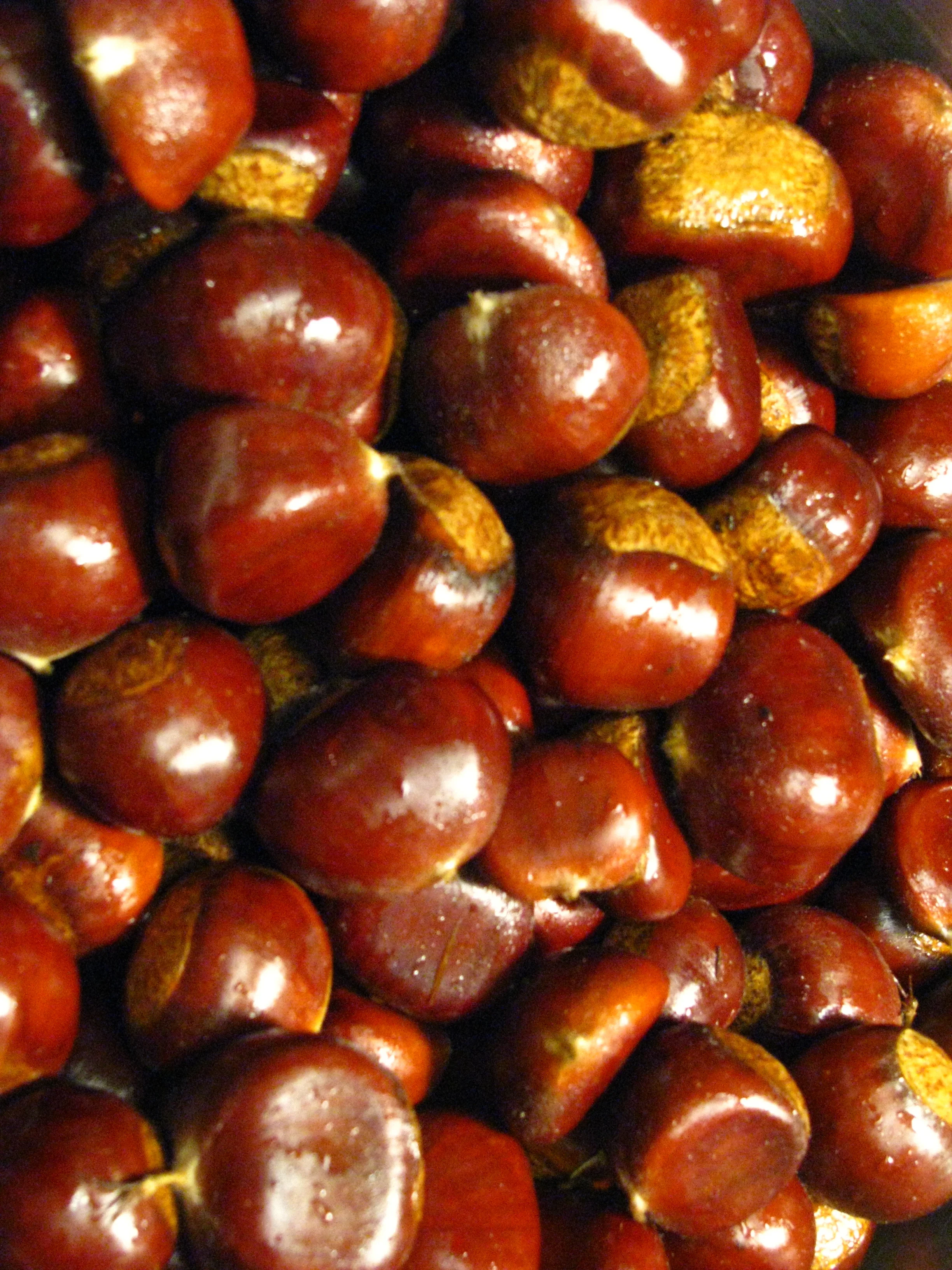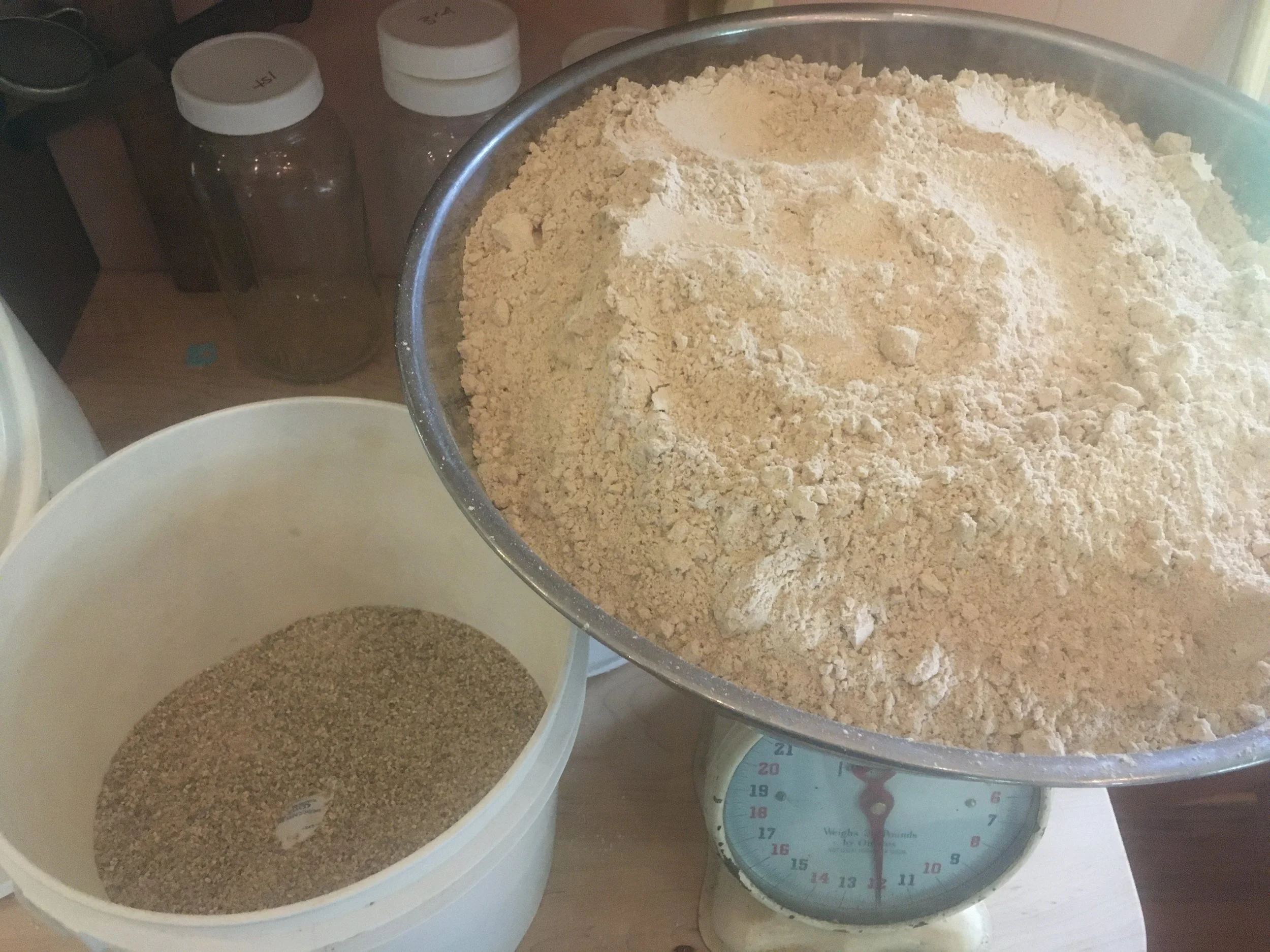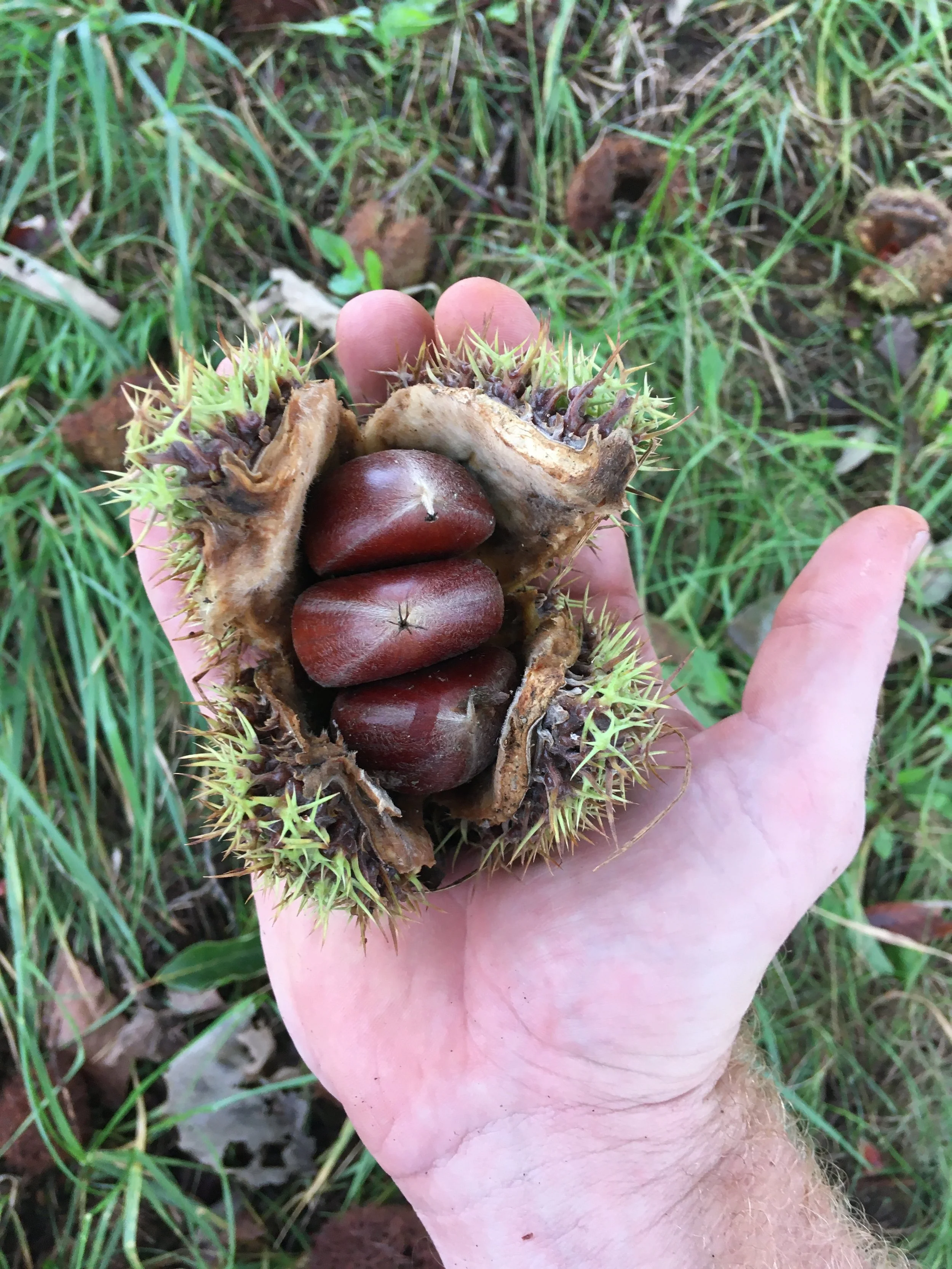Chinese Chestnut











Chinese Chestnut
Castanea mollissima
Plant for coppice growth, for magnificent orchards, and for generations of bread trees!
Hardy from Zones 5-8. 30-60 feet and wide. Two trees are needed for pollination.
We do not ship Chestnuts to WA, OR, CA, MI, LA, FL due to blight quarantine restrictions.
We often lament the loss of the Native American Chestnut when we’re in the woods. It was once one of the most common canopy trees in the Appalachian woodlands, but a bark fungal disease brought them low in the early 20th century. We still see stumps sprouts of them in the mountains near our nursery, and one of the barns we use is mostly built from chestnut lumber. We’re sad we didn’t get to see these Redwoods of the East, but we’re immensely grateful for Chinese Chestnut, one of our very favorite trees.
Chinese Chestnuts coevolved with the blight that wiped out their Native American cousins. They’re not immune, but they’re more resistant than any other Castanea species, which are a member of the Beech family along with Oak. Asian cultivars are orchard trees, shorter and wider than the one native here, which is why the U.S. imported Chinese and Japanese varieties around the turn of the 20th century, which is likely how the blight first spread.
The global Castanea genus includes 13 species that easily hybridize. The name Castanea supposedly comes from the Romans, who called the tree after a town where it commonly grew. Chestnut has been cultivated in the Mediterranean for around 4,000 years, with magnificent surviving Corsican and Sardinian traditions and pig silvopastures in the Galician northwest of the Iberian peninsula. Asian orchardists have grown Chestnuts for nearly 9,000 years from the island of Japan to the Korean Peninsula. In fact, over 300 cultivars have been selected for nut production in five major regions of Asia! China still produces most of the world’s Chestnuts.
Chestnut has rightly earned the nickname “Bread Tree.” They’re basically a perennial carb! The nuts are up to 45% carbohydrate, high in vitamins like niacin, with enough protein to compare to eggs. Nutritionally, chestnuts are pretty similar to brown rice. J. Russell Smith called them the Corn Tree for easily-eroded mountain farming. They’ve served as vital subsistence trees in times of economic recession and politically-induced famines. In May, the trees gleam brightly with white tassels shedding pollen and a very reproductive aroma. Porcupine husks, or burs, hold one or two and sometimes three nuts that drop in September. Egg-yolk yellow kernels inside a thin brown shell, easy to peel. Many people boil or roast them, famously over open holiday fires and sold by street vendors, but we’re most excited about grinding them into dense gluten-free flour.
We bake olive oil cakes, hefty waffles and pancakes, and mix into cornbread recipes or cut with wheat flour for cookies. We’ll occasionally sprinkle flour as a soup thickener and sweetener! As much as we love the flour, we intend to try roasting them and them blending with oil into a creamy nutty spread or stirring with milk and honey. Every which way they’re delicious. We dry the nuts on hanging trays, but beforehand we make sure to hot water bath all the nuts to kill weevil larvae that hatch out during the drying process. 20 minutes in 118 degrees F does the trick, and doesn’t kill the nut germ so they still store well. We sell some chestnut flour to a local bakery, which has us envisioning perennial flour and oil economies. Chestnuts mast in just a few years from seed, but they really hit their stride at 15-20 years showering us with up to 100 pounds of calorie-rich food per tree for hundreds of years, a long-term gift for future generations.
Chestnut resprouts easily from coppice cuts, so we’re experimenting with rows of them pollarded on rotation to keep them short and spaced closely, allow light for understory growth, but also harvest nuts. Young bark shines a little silvery before maturing into gray-brown. The wood burns well and makes sturdy rot-resistant fenceposts and the high tannin content lends itself to leatherworking. Leaves are long, deep waxy green, lined with fine spines like teeth. The golden leaves light up faded landscapes in the Fall. Both leaf and bark have medicinal uses for anti-inflammation and respiratory ailments, as well as animal bedding. A Corsican culinary delight bakes chestnut cakes in the leaves. We want to see rows of these gorgeous generous trees in orchards and pastures!
We grow our Chestnuts from large sweet nuts selected from wide hardy healthy well-shaped trees just across the street from our nursery. A neighbor tells us they’ve been cropping heavily for well over sixty years when he first started harvesting them. They’ve received little care and still have strong spreading form and wonderful abundant nuts! Grafted Chestnut trees can have a high mortality rate, and they grow fairly true to type from seed. In honor of the mountain here, we’re calling them ‘Chessanuttens.’